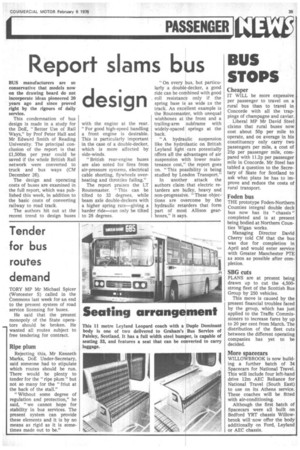Report slams bus design
Page 41

If you've noticed an error in this article please click here to report it so we can fix it.
BUS manufacturers are so conservative that models now on the drawing board do not incorporate ideas pioneered 20 years ago and since proved right by the rigours of daily service.
This condemnation of bus design is made in a study for the DoE, "Better Use of Rail Ways," by Prof Peter Hall and Mr Edward Smith of Reading University. The principal conclusion of the report is that L1,500m per year could be saved if the whole British Rail network were converted to truck and bus ways (CM December 26).
The design and operating costs of buses are examined in the full report, which was published this week, in addition to the basic costs of converting railway to road track.
The authors hit out at the recent trend to design buses with the engine at the rear. "For good high-speed handling a front engine is desirable. This is particularly important in the case of a double-decker, which is more affected by side-winds.
"British rear-engine buses are also noted for fires from air-pressure systems, electrical cable shorting, flywheels overheating and throttles failing."
The report praises the LT Routemaster, " This can be tilted to 32 degrees, while beam axle double-deckers with a higher spring rate—giving a harder ride—can only be tilted to 28 degrees. "On every bus, but particularly a double-decker, a good ride can be combined with good roll resistance only if the spring base is as wide as the track. An excellent example is the Routemaster, with unequal wishbones at the front and a trailing-arm subframe with widely-spaced springs at the back.
"A hydraulic suspension like the hydrolastic on British Leyland light cars potentially offers all the advantages of air suspension with lower maintenance cost," the report goes on. "This possibility is being studied by London Transport."
In another attack the authors claim that electric retarders are bulky, heavy and non-progressive. "These objections are overcome by the hydraulic retarders that form part of most Allison gearboxes," it says.
































































































































